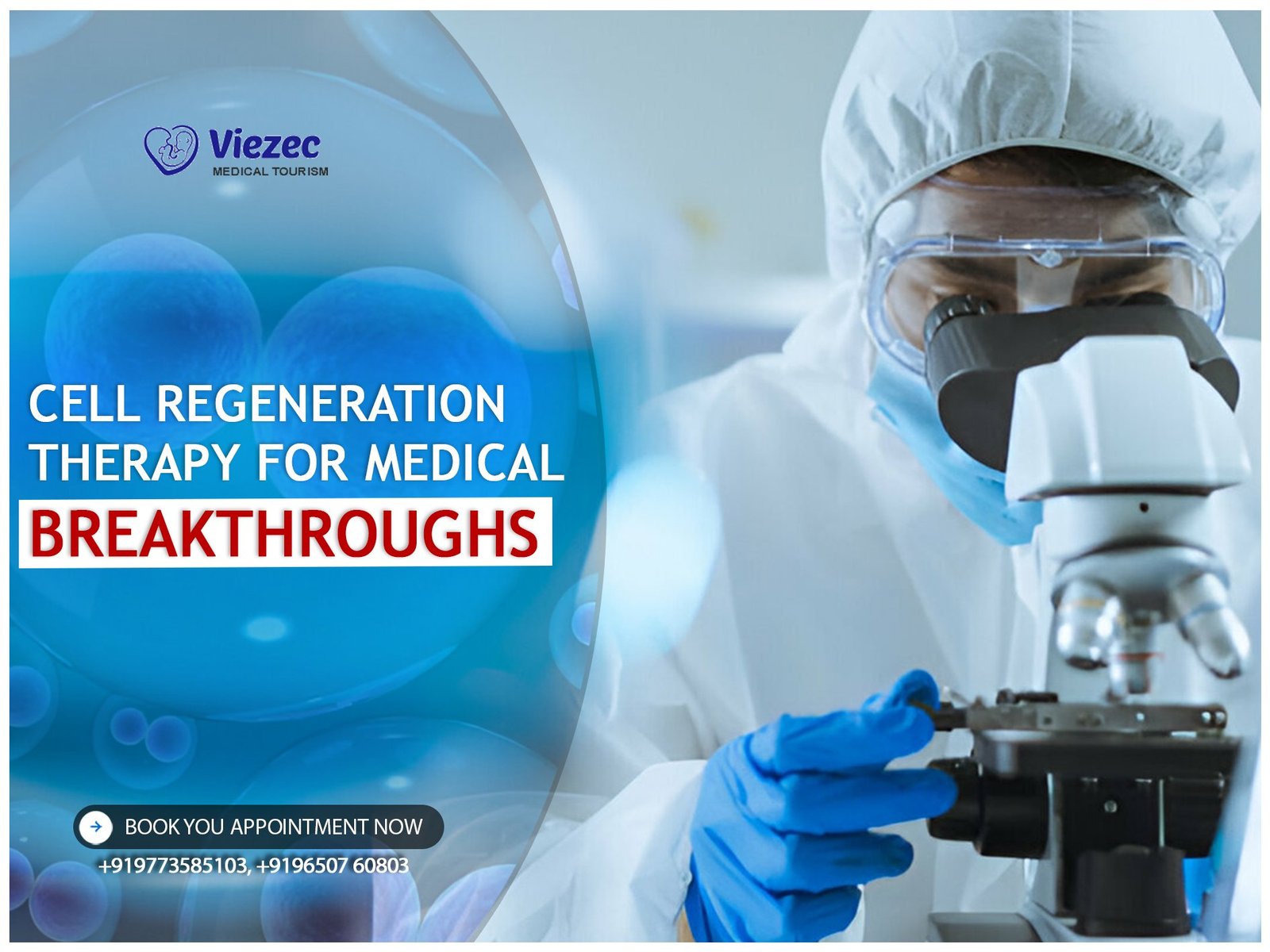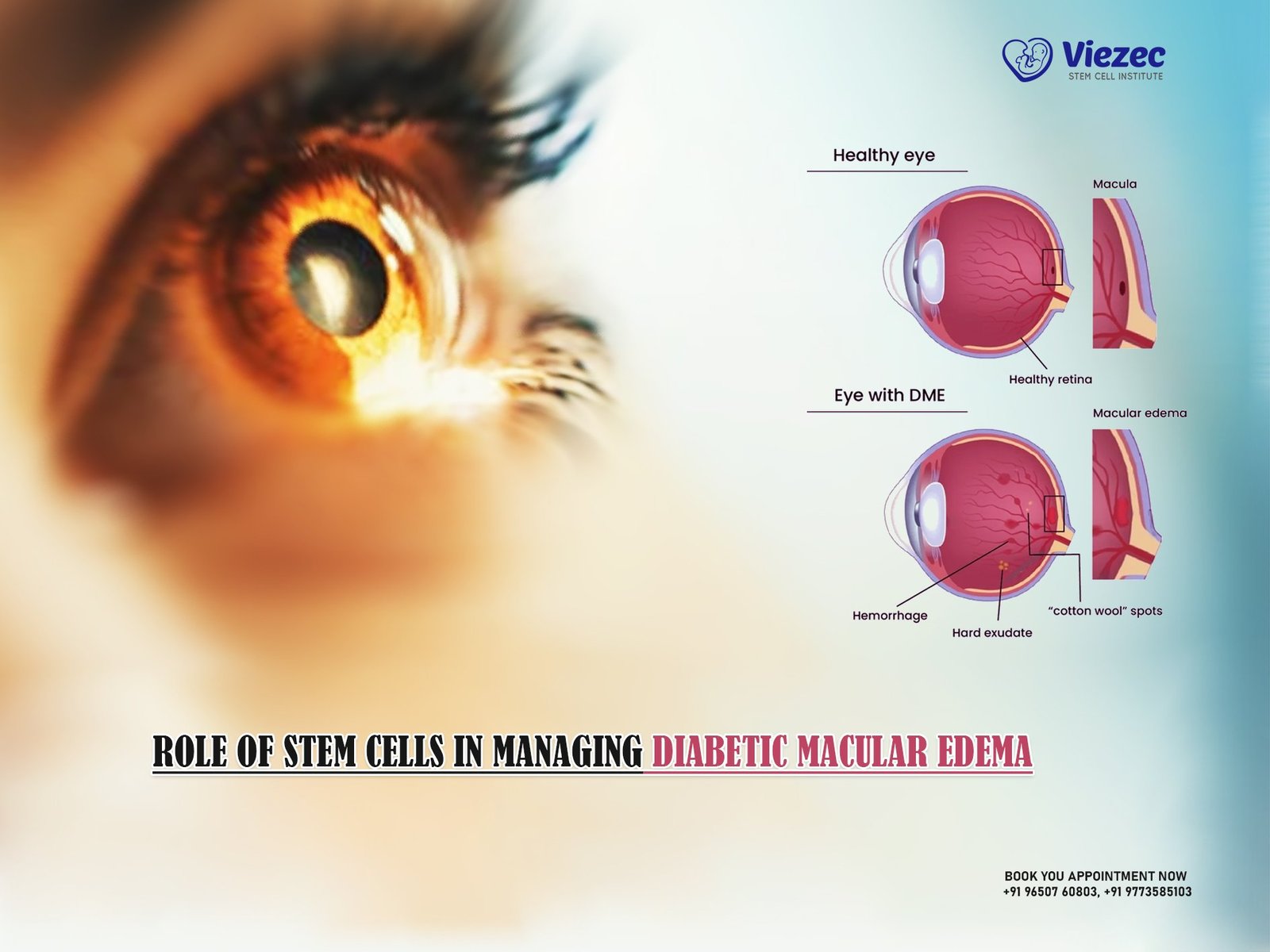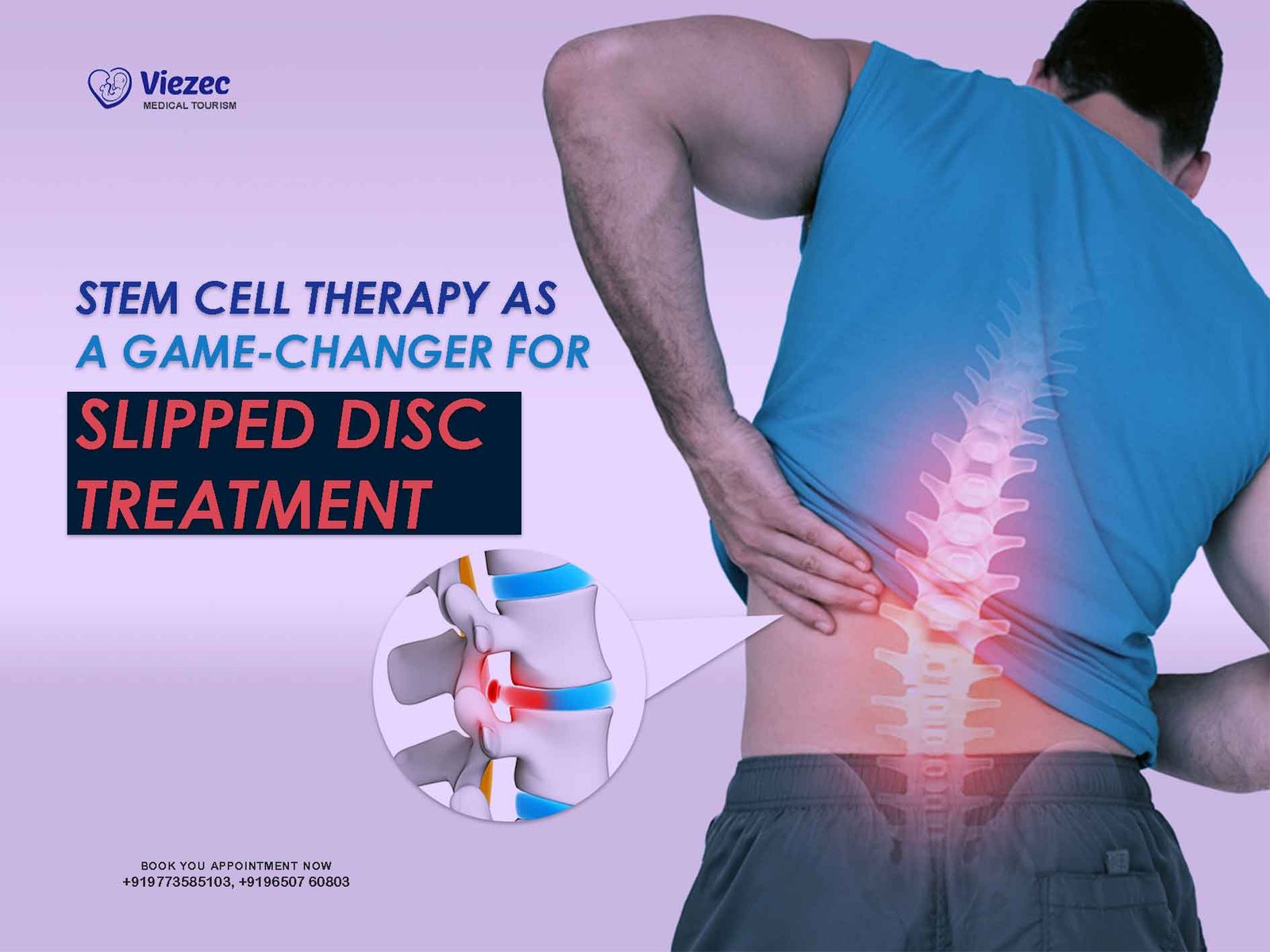Cell regeneration therapy stands at the forefront of modern medicine, offering unprecedented potential to heal and restore damaged tissues, organs, and bodily functions. This revolutionary approach harnesses the body’s innate ability to repair itself, unlocking new avenues for treating a myriad of diseases and injuries. From understanding the intricate mechanisms of cell regeneration to pioneering cutting-edge techniques and navigating regulatory landscapes, the journey towards widespread adoption of regenerative therapies is filled with promise and challenges alike.
Introduction to Cell Regeneration Therapy
The concept of cell regeneration therapy revolves around the fundamental principle of utilizing the body’s own regenerative mechanisms to repair damaged tissues and organs. At its core, this approach aims to harness the power of stem cells, biomaterials, and advanced technologies to promote tissue repair and regeneration. By delving into the underlying mechanisms of cell regeneration and exploring historical perspectives on regenerative medicine, researchers have laid the groundwork for transformative breakthroughs in healthcare.
Understanding Cell Regeneration Mechanisms
Cell regeneration is a complex biological process orchestrated by intricate signaling pathways and cellular interactions. From the proliferation of stem cells to the differentiation of specialized cell types, every step in the regeneration cascade is finely orchestrated to ensure tissue repair and homeostasis. Understanding the molecular mechanisms that govern cell regeneration is crucial for developing targeted therapies that can effectively promote tissue repair and regeneration in various disease conditions.
Historical Perspectives on Regenerative Medicine
The concept of regenerative medicine dates back centuries, with early civilizations exploring natural remedies and practices to aid in wound healing and tissue regeneration. However, it wasn’t until the advent of modern biomedical research that regenerative medicine emerged as a distinct field of study. Landmark discoveries in stem cell biology, tissue engineering, and gene editing have paved the way for groundbreaking advancements in regenerative therapies, offering hope for patients with debilitating diseases and injuries.
Current Challenges and Opportunities
While the potential of cell regeneration therapy is immense, significant challenges remain on the path to clinical translation and widespread adoption. From ethical considerations surrounding the use of embryonic stem cells to technical hurdles in achieving precise tissue regeneration, researchers must address a myriad of challenges to realize the full therapeutic potential of regenerative medicine. However, with advancements in stem cell technology, gene editing, and tissue engineering, opportunities abound for overcoming these challenges and revolutionizing patient care.
The Promise of Stem Cells in Regenerative Therapy
Stem cells represent a cornerstone of regenerative medicine, offering unparalleled potential to regenerate damaged tissues and organs. From embryonic stem cells to induced pluripotent stem cells (iPSCs), researchers have harnessed the unique properties of these versatile cells to develop innovative therapies for a wide range of medical conditions.
Unleashing the Potential of Stem Cells
Stem cells possess the remarkable ability to self-renew and differentiate into specialized cell types, making them invaluable tools for regenerative medicine. By harnessing the regenerative potential of stem cells, researchers can theoretically replace damaged or dysfunctional tissues with healthy, functional counterparts, offering hope for patients with chronic diseases and degenerative conditions.
Types of Stem Cells and Their Applications
A myriad of stem cell types exists, each with unique properties and applications in regenerative therapy. Embryonic stem cells, derived from early-stage embryos, have the potential to differentiate into any cell type in the body, making them ideal candidates for tissue regeneration. In contrast, adult stem cells, found in various tissues throughout the body, play a crucial role in tissue maintenance and repair. Additionally, induced pluripotent stem cells (iPSCs) offer a promising alternative by reprogramming adult cells to an embryonic-like state, bypassing ethical concerns associated with embryonic stem cell research.
Overcoming Ethical and Technical Hurdles
Despite their immense therapeutic potential, stem cell-based therapies are not without challenges. Ethical considerations surrounding the use of embryonic stem cells have sparked debates and controversies within the scientific community and society at large. Furthermore, technical hurdles, such as immune rejection and tumorigenicity, pose significant obstacles to the clinical translation of stem cell therapies. However, ongoing research efforts aimed at improving cell reprogramming techniques, enhancing differentiation protocols, and developing novel delivery methods offer hope for overcoming these challenges and realizing the full potential of stem cell-based regenerative therapies.
Cutting-edge Techniques in Cell Regeneration
Advancements in biomedical engineering and molecular biology have propelled the field of regenerative medicine forward, enabling the development of cutting-edge techniques for promoting tissue repair and regeneration. From CRISPR/Cas9 gene editing to biomaterials and scaffolds for tissue engineering, researchers are leveraging innovative technologies to overcome barriers and unlock new possibilities in cell regeneration therapy.
CRISPR/Cas9 Gene Editing for Precision Regeneration
CRISPR/Cas9 gene editing technology has revolutionized the field of molecular biology, offering unprecedented precision and efficiency in genome editing. By harnessing the power of CRISPR/Cas9, researchers can precisely modify the genetic code of cells to correct mutations, delete disease-causing genes, or introduce therapeutic genes for enhanced regenerative potential. This groundbreaking technology holds immense promise for treating genetic disorders, advancing personalized medicine, and unlocking novel therapeutic avenues in regenerative therapy.
Biomaterials and Scaffolds for Tissue Engineering
Tissue engineering relies on the design and fabrication of biomaterials and scaffolds that mimic the native extracellular matrix to support cell growth and tissue regeneration. By engineering scaffolds with tunable properties, researchers can create microenvironments conducive to cell proliferation, differentiation, and tissue morphogenesis. From synthetic polymers to natural biomaterials, a diverse array of materials are being explored for their potential applications in tissue engineering and regenerative medicine.
Nanotechnology in Cell Delivery and Targeting
Nanotechnology holds tremendous promise for advancing regenerative medicine through targeted drug delivery, imaging, and tissue engineering. By engineering nanoparticles with precise size, shape, and surface properties, researchers can enhance cellular uptake, bioavailability, and therapeutic efficacy. Furthermore, nanoscale carriers can be functionalized with targeting ligands to selectively deliver therapeutic agents to specific tissues or cell types, minimizing off-target effects and maximizing therapeutic outcomes. As nanotechnology continues to evolve, it is poised to revolutionize the field of regenerative medicine and usher in a new era of precision therapeutics.
Applications in Organ Regeneration
Organ regeneration represents a holy grail of regenerative medicine, offering hope for millions of patients suffering from organ failure and debilitating diseases. From the heart to the liver and nervous system, researchers are exploring innovative strategies to promote organ regeneration and restore lost function, ushering in a new era of regenerative medicine.
Heart Regeneration: Healing Broken Hearts
Heart disease remains a leading cause of morbidity and mortality worldwide, underscoring the urgent need for effective therapies to treat and prevent cardiovascular disorders. While traditional treatments such as medication and surgery can alleviate symptoms, they often fail to address the underlying cause of heart failure. Enter heart regeneration, a burgeoning field of regenerative medicine focused on restoring damaged cardiac tissue and function through stem cell therapy, tissue engineering, and cardiac reprogramming. By harnessing the regenerative potential of stem cells and biomaterials, researchers aim to reverse the damage caused by heart disease and restore normal cardiac function, offering hope for millions of patients with heart failure.
Liver Regeneration: From Cirrhosis to Restoration
The liver holds remarkable regenerative capacity, capable of repairing and regenerating damaged tissue in response to injury or disease. However, in cases of chronic liver disease or acute liver failure, the regenerative capacity of the liver may be overwhelmed, leading to irreversible damage and organ failure. Liver regeneration therapy aims to harness the innate regenerative potential of the liver through stem cell transplantation, tissue engineering, and regenerative medicine approaches. By promoting hepatocyte proliferation and tissue repair, researchers seek to restore liver function and improve outcomes for patients with liver disease, offering a ray of hope in the face of a formidable medical challenge.
Neural Regeneration: Hope for Spinal Cord Injuries
Spinal cord injuries represent a devastating medical condition, often resulting in permanent paralysis and loss of function below the level of injury. While current treatments focus on symptom management and rehabilitation, they offer limited prospects for functional recovery. Neural regeneration therapy seeks to overcome these limitations by harnessing the regenerative potential of stem cells, biomaterials, and neurotrophic factors to promote axonal regeneration, remyelination, and neural circuit formation. By bridging the gap between damaged neural tissue and promoting functional recovery, researchers aim to restore mobility and independence for patients with spinal cord injuries, offering hope for a brighter future.
Cellular Therapies for Chronic Diseases
Chronic diseases such as diabetes mellitus, osteoarthritis, and Alzheimer’s disease impose a significant burden on individuals, families, and healthcare systems worldwide. While traditional treatments focus on symptom management, regenerative medicine offers a paradigm shift by targeting the underlying cause of disease and promoting tissue repair and regeneration. From pancreatic regeneration in diabetes mellitus to joint regeneration in osteoarthritis and cognitive restoration in Alzheimer’s disease, cellular therapies hold immense promise for transforming the lives of patients and improving outcomes for chronic diseases.
Diabetes Mellitus: Towards Pancreatic Regeneration
Diabetes mellitus represents a global health crisis, affecting millions of individuals worldwide and imposing a significant burden on healthcare systems. While current treatments such as insulin therapy and oral medications can help manage blood sugar levels, they fail to address the underlying cause of the disease: pancreatic dysfunction. Pancreatic regeneration therapy aims to restore pancreatic function by replenishing insulin-producing beta cells through stem cell transplantation, islet cell transplantation, and regenerative medicine approaches. By promoting beta cell regeneration and restoring normal pancreatic function, researchers seek to offer a cure for diabetes mellitus and improve the quality of life for patients living with this chronic condition.
Osteoarthritis: Joint Regeneration Approaches
Osteoarthritis is the most common form of arthritis, characterized by the progressive degeneration of joint cartilage and underlying bone. While current treatments such as pain medications and joint replacement surgery can provide symptomatic relief, they fail to address the underlying cause of the disease: cartilage degradation and loss. Joint regeneration therapy aims to restore damaged cartilage and promote tissue repair through stem cell therapy, tissue engineering, and regenerative medicine approaches. By harnessing the regenerative potential of stem cells and biomaterials, researchers seek to regenerate healthy joint tissue, alleviate pain, and improve joint function for patients with osteoarthritis, offering hope for a future free from the limitations of this debilitating condition.
Alzheimer’s Disease: Restoring Cognitive Function
Alzheimer’s disease is a progressive neurodegenerative disorder characterized by cognitive decline, memory loss, and behavioral changes. While current treatments focus on symptom management and support, they offer limited prospects for halting or reversing the underlying neurodegenerative process. Neural regeneration therapy aims to restore cognitive function and slow the progression of Alzheimer’s disease through stem cell transplantation, neurotrophic factor delivery, and regenerative medicine approaches. By promoting neural regeneration, synaptic plasticity, and neuroprotection, researchers seek to preserve cognitive function and improve quality of life for patients with Alzheimer’s disease, offering hope for a future free from the devastating effects of this debilitating condition.
Clinical Trials and Regulatory Landscape
The translation of cell regeneration therapies from the laboratory to the clinic is a complex and multifaceted process that requires rigorous testing, evaluation, and regulatory oversight. Clinical trials play a crucial role in assessing the safety and efficacy of regenerative therapies in human patients, providing valuable insights into their therapeutic potential and guiding future development efforts.
Milestones in Clinical Trials of Cell Regeneration Therapies
Over the past decade, significant progress has been made in advancing cell regeneration therapies from the bench to the bedside. Landmark clinical trials have demonstrated the safety and efficacy of stem cell transplantation, gene editing, and tissue engineering approaches in treating a wide range of medical conditions, from cardiovascular disease to neurological disorders. These milestones have paved the way for further research and development efforts aimed at bringing regenerative therapies to patients in need.
Regulatory Challenges and Safety Considerations
Despite the promising results obtained from clinical trials, cell regeneration therapies face regulatory challenges and safety considerations that must be addressed before widespread adoption can occur. Regulatory agencies such as the FDA and EMA play a crucial role in evaluating the safety, efficacy, and quality of regenerative therapies, ensuring that they meet stringent standards for patient safety and product quality. Furthermore, concerns surrounding tumorigenicity, immune rejection, and off-target effects pose significant obstacles to the clinical translation of regenerative therapies, necessitating ongoing research efforts to mitigate these risks and ensure the long-term safety and efficacy of these innovative treatments.
Emerging Trends
As the field of regenerative medicine continues to evolve, researchers are exploring new frontiers and innovative approaches to enhance the safety, efficacy, and accessibility of cell regeneration therapies. From personalized medicine and artificial intelligence to biofabrication and global collaborations, the future of regenerative medicine holds immense promise for transforming healthcare and improving outcomes for patients worldwide.
Personalized Medicine: Tailoring Regenerative Therapies
Personalized medicine represents a paradigm shift in healthcare, emphasizing the importance of individualized treatment approaches tailored to the unique genetic makeup, physiology, and lifestyle of each patient. In the context of regenerative medicine, personalized approaches offer the potential to optimize treatment outcomes by matching patients with the most appropriate therapies based on their specific disease characteristics, genetic profile, and treatment response. By harnessing the power of genomics, biomarkers, and predictive modeling, researchers aim to develop personalized regenerative therapies that maximize efficacy, minimize side effects, and improve patient outcomes.
Global Impact and Economic Implications
The widespread adoption of cell regeneration therapies has the potential to transform healthcare systems, economies, and societies worldwide, offering profound benefits for patients, caregivers, and stakeholders alike. From socioeconomic advantages and market trends to accessibility and equity considerations, the global impact of regenerative medicine extends far beyond the realm of healthcare, shaping the future of medicine and society as a whole.
Socioeconomic Benefits of Cell Regeneration Therapies
Cell regeneration therapies offer a host of socioeconomic benefits, ranging from improved patient outcomes and reduced healthcare costs to enhanced productivity and quality of life. By promoting tissue repair and regeneration, regenerative therapies have the potential to alleviate the burden of chronic diseases, reduce hospitalizations, and mitigate long-term healthcare costs associated with managing complex medical conditions. Furthermore, the development and commercialization of regenerative therapies create new opportunities for innovation, job creation, and economic growth, driving investment and fostering a culture of entrepreneurship in the biotechnology and healthcare sectors.
Market Trends and Investment Opportunities
The market for cell regeneration therapies is poised for exponential growth, fueled by advancements in stem cell technology, gene editing, and tissue engineering. With an aging population and rising prevalence of chronic diseases, there is a growing demand for innovative treatments that address the underlying cause of disease and offer long-term solutions for patients. As a result, biotechnology companies, pharmaceutical firms, and investors are increasingly focusing their efforts on developing and commercializing regenerative therapies with the potential to transform healthcare and capture significant market share. From stem cell-based products and gene therapies to tissue-engineered implants and personalized medicine solutions, the regenerative medicine market offers a wealth of investment opportunities for those willing to embrace innovation and disruption in the pursuit of better health outcomes.
Addressing Accessibility and Equity Challenges
While the promise of cell regeneration therapies is undeniable, ensuring equitable access to these innovative treatments remains a pressing challenge for healthcare systems worldwide. Disparities in healthcare access, affordability, and infrastructure pose significant barriers to the widespread adoption of regenerative therapies, particularly in low- and middle-income countries where resources may be limited. Furthermore, regulatory hurdles, reimbursement policies, and intellectual property rights can hinder the development and distribution of regenerative therapies in underserved regions, exacerbating existing inequities in healthcare delivery. Addressing these accessibility and equity challenges requires a multi-faceted approach that prioritizes collaboration, innovation, and policy reform to ensure that all patients have access to the life-saving benefits of regenerative medicine, regardless of their socioeconomic status or geographic location.
Patient Perspectives and Case Studies
At the heart of regenerative medicine are the patients whose lives are transformed by innovative therapies and cutting-edge treatments. From voices of hope to inspiring case studies, patient perspectives offer invaluable insights into the real-world impact of regenerative medicine and the profound difference it makes in the lives of individuals, families, and communities.
Voices of Hope: Patient Stories of Regeneration
Behind every scientific breakthrough and medical milestone are the stories of patients whose lives have been forever changed by regenerative medicine. From individuals living with chronic diseases to survivors of traumatic injuries, patient perspectives offer a glimpse into the human side of regenerative therapies, highlighting the resilience, courage, and hope that drive progress in the field. Whether it’s a child receiving a life-saving stem cell transplant or an elderly patient regaining mobility after joint replacement surgery, these stories remind us of the transformative power of regenerative medicine and the enduring impact it has on the lives of those it touches.
Case Studies Highlighting Successful Regenerative Treatments
Throughout the history of regenerative medicine, there have been numerous examples of successful treatments and remarkable recoveries that showcase the potential of cell regeneration therapies to improve patient outcomes and quality of life. From groundbreaking stem cell transplants to pioneering gene editing techniques, these case studies serve as testament to the power of innovation and perseverance in overcoming even the most daunting medical challenges. Whether it’s a patient with heart failure experiencing dramatic improvements in cardiac function or a child with spinal cord injury regaining sensation and movement, these success stories offer hope and inspiration to patients, caregivers, and researchers alike, fueling continued efforts to push the boundaries of what’s possible in regenerative medicine.
Patient-Centered Care in Regenerative Medicine
Central to the success of regenerative medicine is a patient-centered approach that prioritizes the needs, preferences, and values of individuals receiving treatment. From informed consent and shared decision-making to compassionate care and ongoing support, patient-centered care ensures that patients are active participants in their healthcare journey, empowered to make informed choices and advocate for their own well-being. Furthermore, patient engagement and feedback play a crucial role in shaping research priorities, clinical trials, and healthcare policies, ensuring that regenerative therapies are developed and delivered in a manner that aligns with the needs and priorities of those they are intended to benefit. By placing patients at the center of the healthcare continuum, regenerative medicine holds the promise of transforming not only the way we treat disease but also the way we care for and support individuals throughout their healing journey.
Collaborative Efforts and Future Collaborations
The pursuit of regenerative medicine requires collaboration, cooperation, and collective action across disciplines, sectors, and borders. From interdisciplinary research teams to global partnerships, collaborative efforts play a crucial role in advancing the science, technology, and practice of regenerative medicine, driving innovation and accelerating progress towards a future where all patients have access to safe, effective, and affordable treatments.
Interdisciplinary Collaborations Driving Innovation
Regenerative medicine is inherently interdisciplinary, drawing upon insights and expertise from a wide range of scientific disciplines, including biology, engineering, medicine, and ethics. By bringing together researchers, clinicians, engineers, and policymakers from diverse backgrounds, interdisciplinary collaborations foster creativity, innovation, and synergies that propel the field forward. From biomaterials scientists working alongside stem cell biologists to bioethicists engaging with policymakers on regulatory frameworks, these collaborative efforts break down silos and bridge gaps, fostering a culture of innovation and discovery that fuels progress in regenerative medicine.
Global Partnerships in Advancing Regenerative Therapies
The challenges and opportunities presented by regenerative medicine are global in nature, transcending geographical boundaries and cultural differences. As such, international collaboration and cooperation are essential for addressing complex scientific, ethical, and societal issues, advancing the field, and ensuring equitable access to emerging therapies. From joint research initiatives and technology transfer agreements to capacity-building efforts and knowledge sharing, global partnerships play a pivotal role in accelerating the pace of scientific discovery and translation, driving innovation, and expanding the reach of regenerative medicine to underserved populations around the world.
Building Bridges: Academia, Industry, and Government Initiatives
The successful translation of regenerative therapies from the laboratory to the clinic requires a coordinated effort among academia, industry, and government stakeholders to overcome barriers, facilitate innovation, and promote patient access. Academia serves as the engine of discovery, generating new knowledge, technologies, and insights that form the foundation of regenerative medicine. Industry plays a critical role in translating these discoveries into tangible products and therapies through research and development, manufacturing, and commercialization efforts. Government agencies provide essential support through funding, regulatory oversight, and policy guidance, ensuring that regenerative therapies meet rigorous standards for safety, efficacy, and quality. By building bridges across academia, industry, and government, stakeholders can leverage their respective strengths and resources to accelerate progress, foster innovation, and bring regenerative therapies to patients in need.
In conclusion, cell regeneration therapy holds immense promise for revolutionizing healthcare and addressing some of the most pressing medical challenges of our time. From understanding the mechanisms of cell regeneration to pioneering cutting-edge techniques, the journey towards realizing the full potential of regenerative medicine is filled with promise and opportunity. By embracing collaboration, innovation, and patient-centered care, researchers, clinicians, and stakeholders can work together to unlock new possibilities in regenerative medicine and improve outcomes for patients worldwide. As we look towards the future, let us continue to push the boundaries of what’s possible, harnessing the power of regenerative therapies to heal, restore, and transform lives for generations to come.









